
Interior
The side panels are equipped with captive thumbscrews, saving you some fiddling when removing and attaching them. The front panel tugs off with relative ease, revealing a full cover magnetic dust filter for the trio of intake fans. Unfortunately, we found the front panel was very tough to replace, and often had to use excessive force to get the pins through. The roof panel is easier to work with, thankfully, and it comes away cleanly since it's not attached to the front I/O panel. That said, there's no dust filter up top – most people will probably use it as an exhaust area but without fans or when the fans are off, dust is relatively free to enter from above.The quality of the well-machined interior is up to the usual NZXT standards, with pre-installed motherboard mounts, a massive CPU cooler cutout and thumbscrews on the PCI bracket all aiding the installation process. The key feature is of course the PSU cover, which really helps to keep the interior looking tidy by shielding all the bulky power cables. On the back of the case is a thumbscrew-based PSU bracket which you use to slide your power supply into place – it's a little extra fuss but well worth it for the look achieved.
The PSU cover is also used to bulk out the storage options – on top of it is a pair of mounting trays for SSDs. These are dead simple to use, again thanks to thumbscrews, and give you a good way of showing off your speedy storage too – they're easy to see through the window.
There are a further five metal drive mounting trays stacked vertically at the front. Captive thumbscrews ensure an easy release system, and the trays can all house 2.5in and 3.5in devices, with the latter installed on anti-vibration rubber mounts too. Finally, you can attach one more 3.5in or 2.5in drive directly to the floor of the Noctis 450, right near the front.
NZXT also incorporates a PWM fan hub into the Noctis 450. This is capable of powering up to eight 3-pin fans (max 30W) based on a single PWM reading from your motherboard, meaning the case's entire cooling system will respond to changes in your CPU temperature. There's a dedicated PWM connection on the PCB which you connect to your motherboards CPU_FAN header. Above the CPU cooler cutout we also find the LED hub, which controls all of the case's lighting.
Cable routing is decent here as well, with suitably sized holes placed above, below and to the side of where the motherboard sits. The main holes also have flexible rubber grommets attached for maximum neatness, and there are even some cutouts suitable for micro-ATX users - it's possible to build a very clean system indeed, as you'll see. NZXT does a great job pre-routing the Noctis 450's many cables, which are all sleeved in black, and all the LEDs and system fans come pre-connected to their respective hubs – you only need to connect a single Molex connector to ensure both hubs are powered. The numerous hooks and cable zip-ties help you complete the job. We do like that the main cable channel is indented to give you more room, but even so space can be a bit limited when dealing with multiple power cables, especially as the side panel is flat. As such, Phanteks still has the upper hand in this area – there's even more space to work with in its cases and the Velcro cable ties are super helpful too.
For water-cooling, the front and roof panels are where it's at. Both are capable of housing 360mm or 280mm radiators. In the front, this will mean removing the five drive trays, although you should still be okay using the floor-mounted drive position and, of course, the two internal 2.5in ones. As for the roof, the plastic panel leaves enough space to install a row of fans in the upper section on top of the internal steel panelling, which in turn gives you a decent amount of clearance below – there should be enough for a thick radiator, although a second row of fans would likely have clearance issues. All in all, it's a decent amount of support for a case this size, but not outstanding. We'd also like to see NZXT pay more attention to potential pump and reservoir mounting positions, as Phanteks has done with its recent efforts.

MSI MPG Velox 100R Chassis Review
October 14 2021 | 15:04

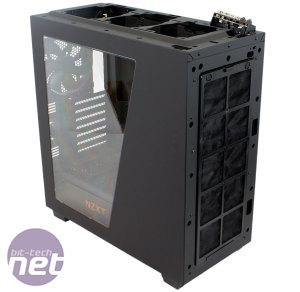
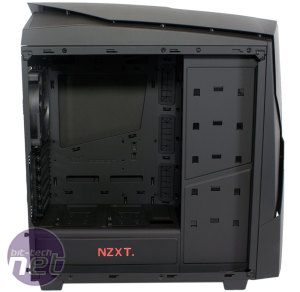
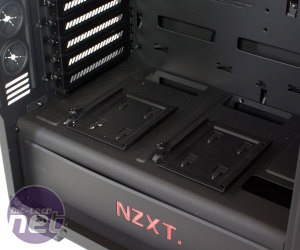
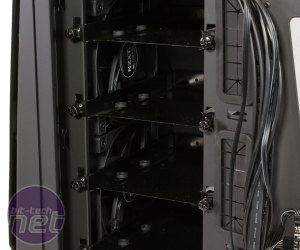
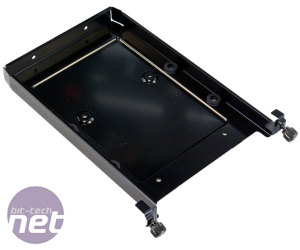
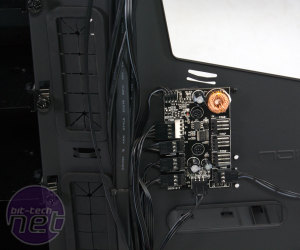
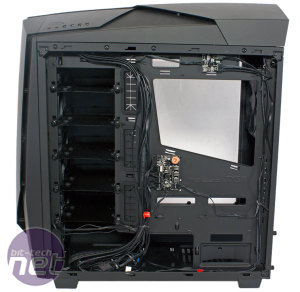








Want to comment? Please log in.